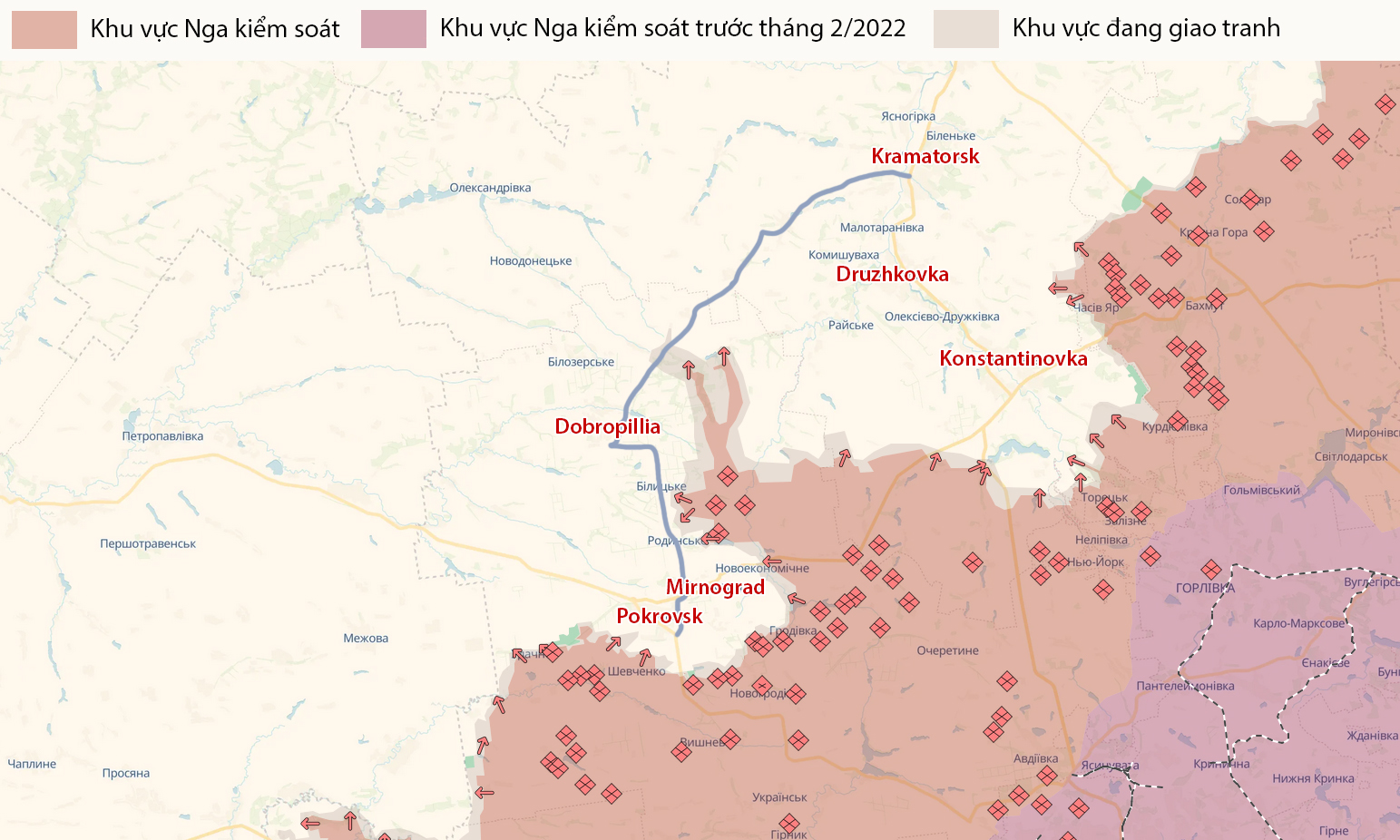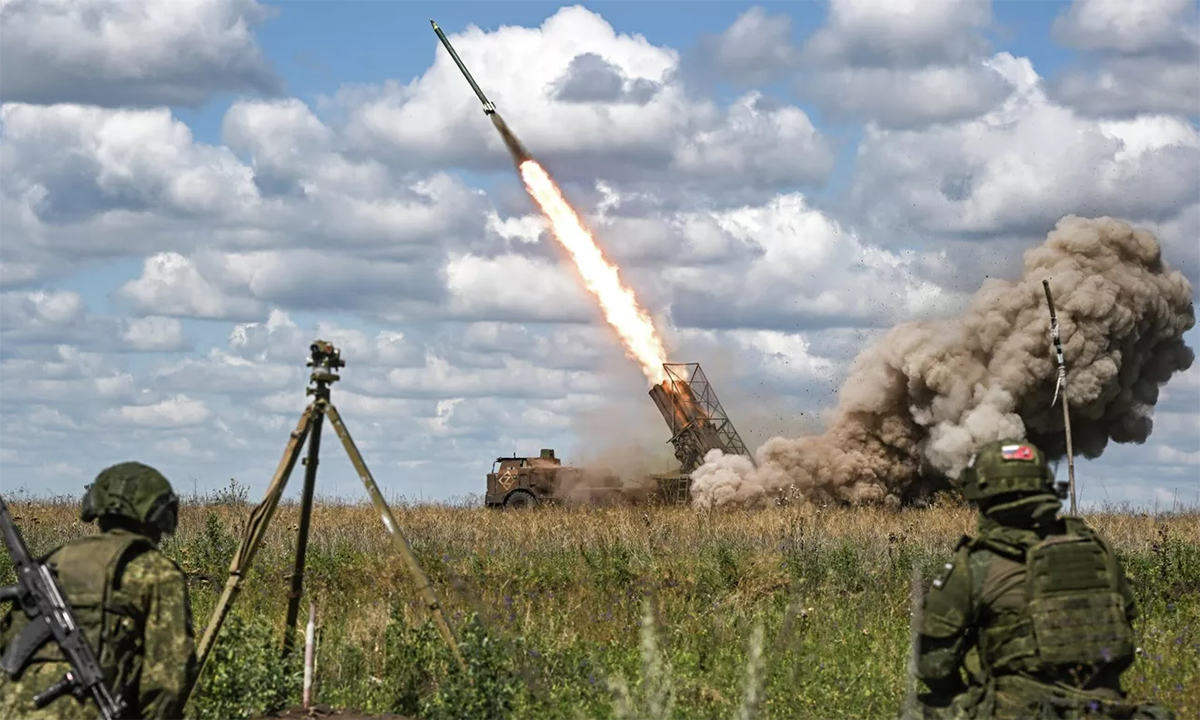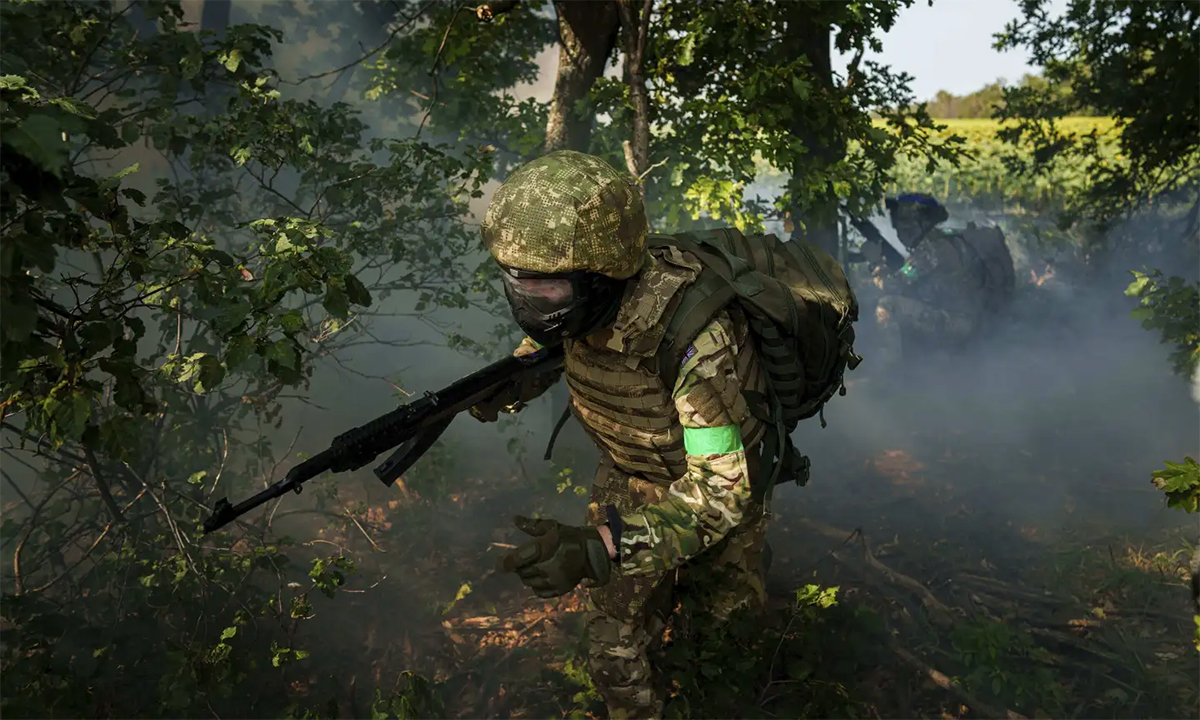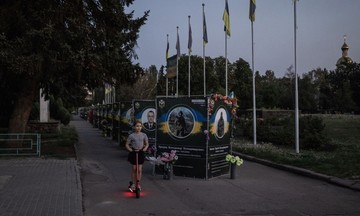The Ukrainian National Guard's 1st Corps, also known as the Azov Corps, announced on 12/8 that it has taken up defensive positions near Pokrovsk in Donetsk province. This elite unit is typically deployed to critical areas facing imminent danger.
This move follows reports from intelligence groups linked to the Ukrainian Ministry of Defense that Russian forces have breached Ukrainian lines north of Pokrovsk, advancing into Kucheriv Yar, Zolotyi Kolodiaz, and Vesele.
Russian units are also pushing toward the Pokrovsk-Dobropillia-Kramatorsk highway, a key Ukrainian supply route actively used until at least mid-July.
 |
The situation near Pokrovsk and Kramatorsk as of 12/8. Graphic: Deep State |
Ukrainian President Volodymyr Zelensky acknowledged on the same day that Russian forces have advanced up to 10 km in some areas near Dobropillia. He maintained that these units lack heavy equipment and support, asserting they will soon be defeated.
Andriy Kovalov, spokesperson for the Ukrainian Armed Forces General Staff, affirmed that Ukrainian forces "are taking effective measures to halt the Russian advance on the Dobropillia and Pokrovsk fronts".
Despite these assurances, some Ukrainian soldiers and military experts express concern about the situation near Pokrovsk. They believe Russia may concentrate its forces to push westward, cutting off a substantial number of Ukrainian units from their supply lines.
Wall Street Journal reporter Yaroslav Trofimov warned, "If the Ukrainian army cannot quickly stop the offensive towards the Pokrovsk-Dobropillia-Kramatorsk highway, the consequences will be severe".
Iuliia Mendel, former press secretary to the Ukrainian president, echoed this concern. The deployment of the Azov Corps, she said, indicates the gravity of the Russian thrust towards this strategic highway.
"The Azov Corps is holding positions along one of the most difficult defensive lines near Pokrovsk. The last two major strongholds in the region, Slovyansk and Kramatorsk, risk being cut off from Dnipropetrovsk province, leaving only a single supply line from Kharkov province," she stated.
 |
Russian Uragan multiple rocket launchers strike Ukrainian positions on 11/8. Photo: Russian Ministry of Defense |
The situation is apparently so serious that Lieutenant Colonel Bohdan Krotevych, former chief of staff of the Azov Brigade, sent a warning message to President Zelensky.
"I don't know what has been reported to you, but I must inform you that the Pokrovsk-Konstantinovka front is in complete chaos. The situation is getting worse, there is no 'stable defense line.' Pokrovsk and Mirnograd are almost surrounded, Konstantinovka is partially surrounded, the enemy is advancing towards Kramatorsk and Druzhkovka," Krotevych reported.
Some analysts suggest that Ukrainian defenses might still hold, and complete collapse is not imminent.
Ukrainian military blogger Tatarigami noted, "The current situation resembles May 2024, when Russia broke through unprepared Ukrainian defenses on the Kharkov province border and advanced almost 10 km. That offensive was later stopped".
However, Tatarigami admitted there is no information yet to assess whether Ukraine has enough resources to stop the Russian advance on the Pokrovsk-Dobropillia-Kramatorsk front. "Russia has concentrated around 100,000 troops near Pokrovsk and could expand its control in the area," the blogger added.
The decision to deploy the Azov Corps to Pokrovsk does not guarantee that the Ukrainian defense line will hold.
In February 2024, Ukraine deployed the Azov Brigade to the Avdeevka front to reinforce defenses against fierce Russian attacks. However, this effort only delayed Russian forces, allowing Ukrainian units to withdraw from the city a few days later.
 |
Ukrainian soldiers train near Pokrovsk, Donetsk province on 8/8. Photo: AP |
Michael Kofman, a military expert at the Carnegie Endowment for International Peace, explained that Russia's overwhelming numerical advantage is a key factor in its recent advances in Donetsk province.
"The Russian thrust near Dobropillia highlights a widespread problem for the Ukrainian army: the lack of cohesive defensive lines and undermanned units. This leads to slow changes on the battlefield, but with the constant possibility of sudden breakthroughs," Kofman assessed.
Due to the heavy presence of drones, Russia is not launching large-scale armored and infantry assaults. Instead, it is using small squads to probe for weaknesses and gradually infiltrate Ukraine's overstretched defenses.
Kofman warned, "With a shortage of infantry and reserves, Ukraine relies on drone units to hold positions. This tactic buys time but is not enough to stabilize the front or address the more fundamental challenges of force management and development".
Nguyen Tien (According to War Zone, AFP, AP)












